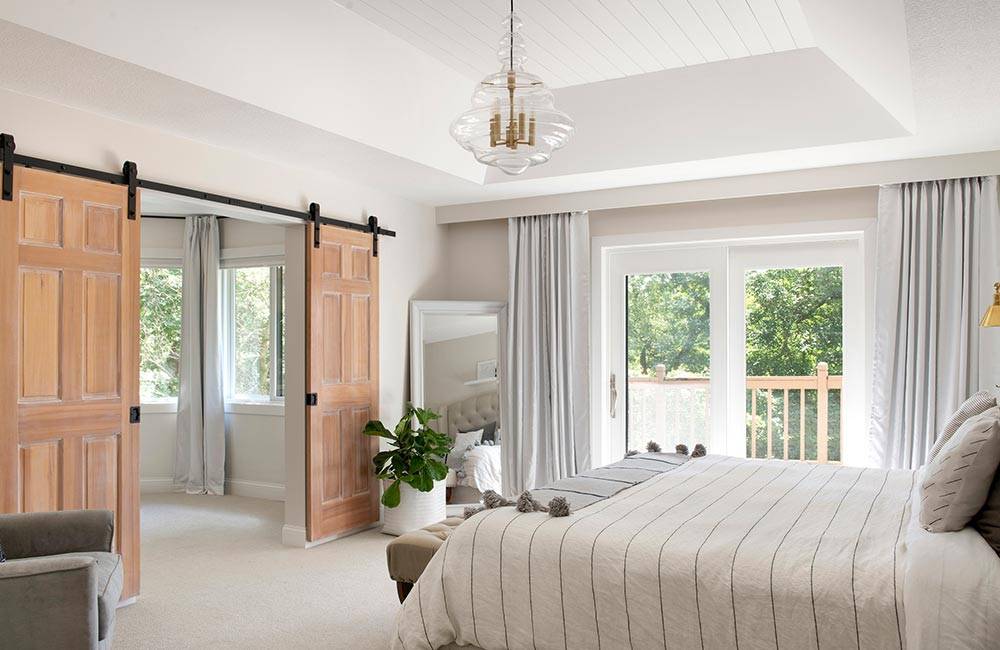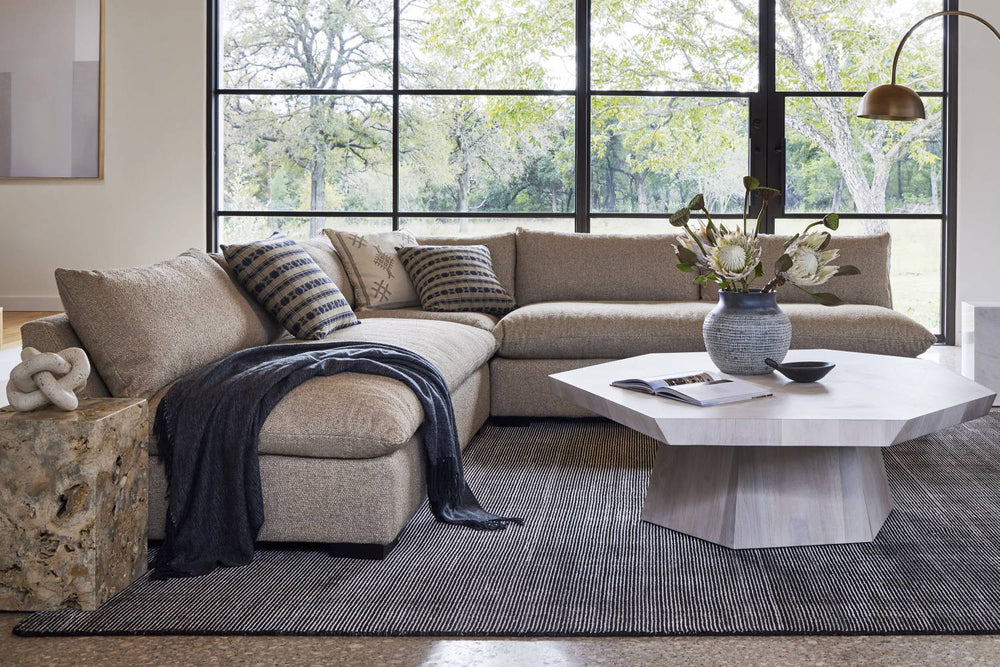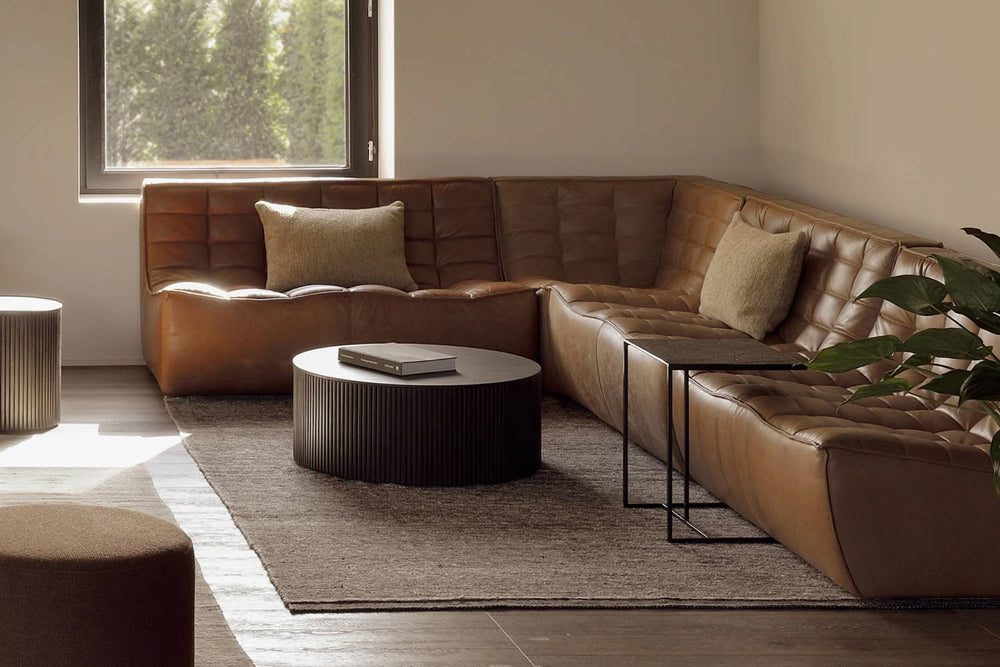Cocoon Sofa by Eilersen
Choosing the perfect sofa for your living space is an exciting yet daunting task. With so many styles, designs, and materials to consider, it's easy to overlook one critical aspect: size. Determining the right size sofa for your home is crucial to achieving both comfort and functionality. In this guide, we will walk you through the essential factors to consider when determining the ideal size for your sofa. From understanding your available space to considering your personal preferences and lifestyle requirements, we will provide you with practical tips and considerations to make an informed decision. Whether you're dealing with a compact apartment or a spacious family room, this guide aims to empower you with the knowledge you need to choose a couch size that perfectly fits your needs and complements your interior design.
N701 Modular Sofa by Ethnicraft
Typical Sofa Sizing
Sofas range in size from as small as around four feet for some loveseats (two seater sofas), up to 13 feet in length or more for many sectionals (L shape sectionals can extend in depth to 10 feet or so as well). Length, depth, and seat height of the sofa can all affect how comfortable it is to sit on.
What is a comfortable seat depth for a sofa?
- The right seat depth can vary with your height – taller people may need more depth than shorter people
- For most people in the average height range (around 5’4” to 5’10”), a sofa 20-22 inches in depth is generally about right
- 23-24 inches can be better for people over six feet tall. Some sofas can even have a pillow height of 38” or more
- Deeper seats can also be a great option for the most comfortable lounging, and many people prefer them
What’s the best seat height for a sofa?
- As with depth, taller individuals may need a bit more height to be comfortable
- 15”-17” is fairly typical, and works well for most people. Taller sofa backs, up to 20” from the seat to the top, are also available and tend to be more comfortable for people over six feet tall
Ellsworth Sofa by Sofa
How to Choose the Right Sofa Size for a Room
Choosing the right sofa size for a room involves considering several factors to ensure a comfortable and visually appealing fit. Here are some steps you can follow to select the appropriate sofa size:
- Measure your room: Measure the dimensions of your room, including the length, width, and height. Make note of any architectural features, such as windows, doors, and radiators, that may impact the placement of the sofa.
- Determine the sofa's location: Decide where you want to place the sofa in the room. Consider the flow of traffic, focal points (such as a fireplace or TV), and the overall layout of the space.
- Scale and proportion: Take into account the scale and proportion of the room. If you have a large living room, a small sofa may look out of place, whereas a large sofa may overwhelm a smaller room. Aim for a balance between the size of the sofa and the other furniture in the space.
- Consider functionality: Think about how you intend to use the sofa. Will it primarily be for seating or lounging? If you plan to use it for entertaining guests or as a primary seating option, you may want a larger sofa with ample seating space. If you have limited space or prefer a more intimate setting, a smaller sofa or a sectional with a chaise might be more appropriate.
- Allow for clearance: Ensure that there is enough clearance around the sofa for comfortable movement. Leave at least 30-36" between the sofa and other furniture pieces, walls, and walkways around it. As a general guideline, aim for at least 18 inches of space between the sofa and coffee table or any other furniture immediately in front of it.
- Visual balance: Consider the visual impact of the sofa in the room. A large sofa in a small space can make the room feel crowded, while a small sofa in a large room may appear lost. Strive for a balanced look where the sofa complements the overall aesthetics of the room.
How to Choose the Size of a Sectional Sofa
- A typical sectional is generally around 130” in width. Smaller models may be closer to 112”, while large ones can exceed 160”
- Sectionals also tend to be about 40 inches deept
- 95”x95” is also a common size for sectionals
- As with other types of sofa, there should be enough space on the sides, and in walkway areas adjacent to it. Typically 30-36" should suffice, with at least 18" of space between the sectional and other furniture to ensure proper traffic flow, without feeling too cramped
Guide 82-Inch Sofa by Blu Dot
Can a Sofa Be Too Big for a Room?
Yes, a sofa can be too big for a room. When a sofa is too large for the space, it can make the room feel cramped and overcrowded.
Choosing a sofa size for a small living room
- Measure your space accurately, assess the scale and proportion of the sofa, and visualize how it will fit within the room layout. By choosing a sofa that is appropriately sized for your room, you can create a more comfortable, visually pleasing, and functional living area
- Look for sofas that have a smaller scale or are specifically designed for small spaces. These sofas are generally more compact in size, with narrower arms and a streamlined profile. They are designed to fit snugly in smaller rooms without overwhelming the space
- In a small space, it can be beneficial to choose a sofa that offers additional functionality. Look for sofas with built-in storage compartments, pull-out trays, or a sofa bed feature. These features can help maximize space utilization and provide extra storage or sleeping options
- Modular sofas or those with modular components can be a great option for small spaces. They allow you to customize the configuration and adapt to your changing needs. You can add or remove sections as required, making it a versatile choice for compact rooms
Augustine Sofa by Four Hands
Remember, measuring your space accurately and considering the scale and proportion of your room will help you avoid the pitfalls of purchasing a couch that is either too large or too small. Additionally, considering the functional aspects such as the layout of your room, traffic flow, and any specific needs or preferences will ensure that your chosen sofa enhances the overall ambiance of your living area. Lastly, don't forget to factor in your own comfort. Consider the depth, height, and cushioning of the couch to ensure a relaxing seating experience. After all, a couch is not just a piece of furniture; it's a space where memories are made, conversations are shared, and relaxation is embraced.








